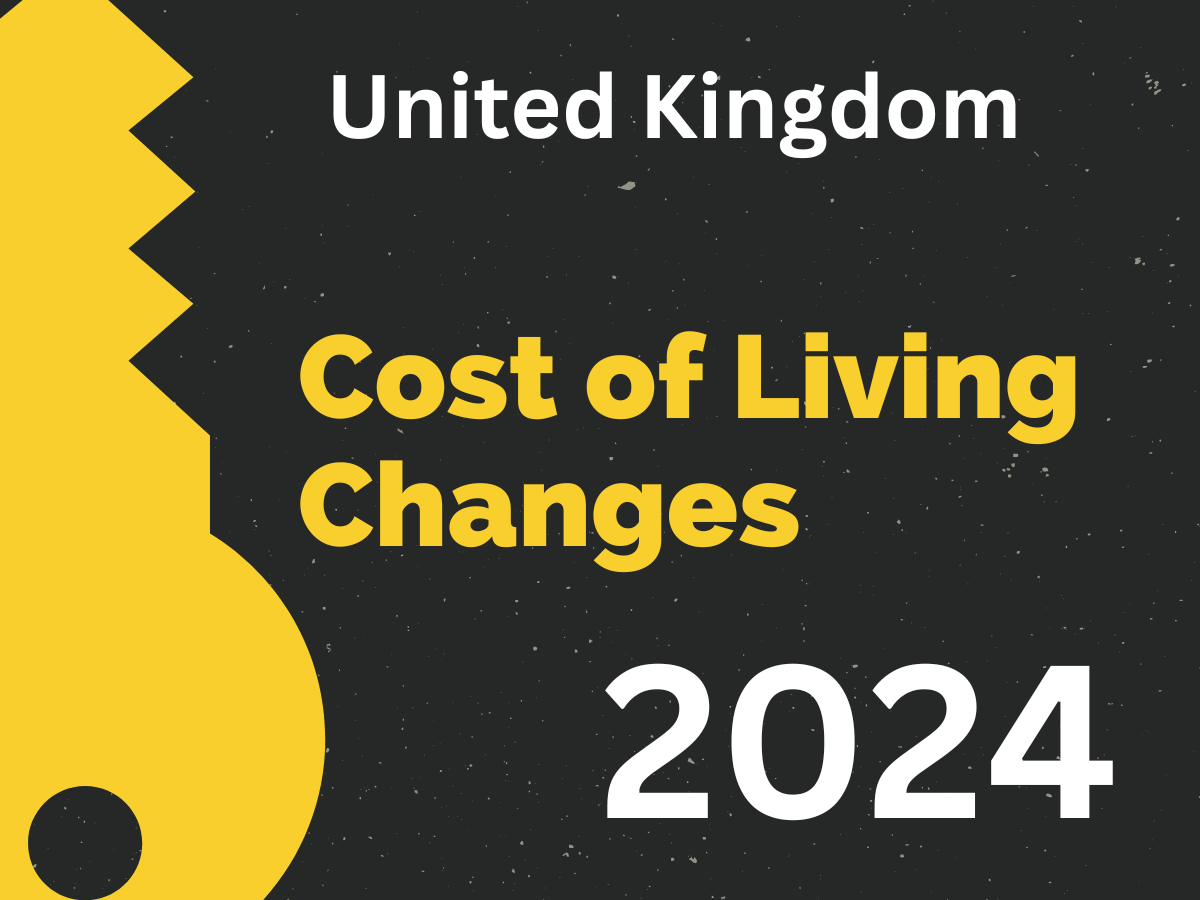The United Kingdom experienced a significant surge in the cost of living throughout 2021 and 2022. In March 2022, the annual inflation rate soared to 11.1%, marking a 41-year high, before gradually tapering off. This inflationary trend has profound implications for the affordability of goods and services, impacting households across the nation.
UK Cost of Living Changes 2025
Recent data reveals that in March 2023, the annual inflation rate stood at 4.0%, slightly up from 3.9% in March but down from the peak of 4.6% in March. This marginal increase was primarily attributed to a rise in tobacco duty.
It’s important to note that while the inflation rate has decreased, prices are still higher compared to the previous year. For instance, if the annual inflation rate drops from 10% to 5%, it indicates that prices are still 5% higher than the preceding year.
Forecasts suggest a continued decline in the inflation rate throughout 2025, albeit at a slower pace than in 2023. This projection is attributed to lower energy prices and reduced inflation in consumer goods and food items.
Factors contributing to the high inflation rates are multifaceted, stemming from both global and domestic sources. Initially, international factors such as heightened global demand for consumer goods due to the COVID-19 pandemic, supply chain disruptions, and surging energy prices, particularly fueled by geopolitical tensions like Russia’s invasion of Ukraine, were primary drivers.

However, domestic factors have also played a significant role in exacerbating inflation. Strong pay growth, coupled with disruptions in shipping routes caused by conflicts, notably the recent events involving Houthi rebels in Yemen, have further strained the economy.
Cost of Living Changes News
One of the critical drivers of high inflation has been the steep rise in food prices, exacerbated by global supply chain disruptions and geopolitical tensions. In March 2023, UK food prices were 8.0% higher compared to the previous year. Similarly, energy prices, including household energy tariffs and road fuel costs, witnessed a surge in 2022 due to geopolitical conflicts, particularly the Russia-Ukraine situation.
To mitigate the impact of rising energy costs, the government introduced the Energy Price Guarantee (EPG), which initially capped typical consumption at £2,500 a year, subsequently increasing to £3,000. This measure helped limit the escalation of consumer bills.
The consequences of high inflation have been felt by households across the income spectrum, with low-income households disproportionately affected. Rising prices have led to increased demand for food bank services, highlighting the severity of the situation.
In response, the government has implemented various measures to alleviate the financial burden on households. From April 2025, benefits linked to inflation will be uprated by 6.7%, in line with the annual CPI inflation rate. Additionally, the government is providing cost of living payments to eligible recipients, including households on means-tested benefits, pensioner households, and individuals on non-means-tested disability benefits.
Moreover, collaborative efforts between the government, principal lenders, and regulatory authorities have resulted in support measures for individuals struggling with mortgage payments, offering relief amidst economic uncertainties.
As the UK navigates through these challenging economic times, it becomes imperative to adopt comprehensive strategies aimed at stabilizing inflation, enhancing economic resilience, and safeguarding the well-being of its citizens. By addressing both global and domestic factors contributing to inflation and implementing targeted policies, the UK can strive towards achieving sustainable economic recovery and prosperity for all.
